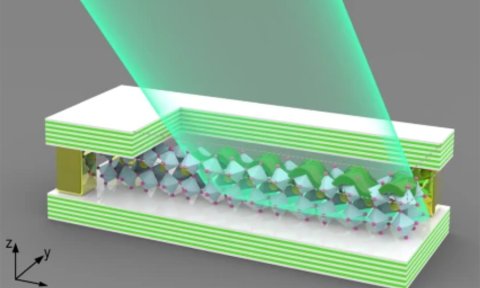Nebraska engineers' discovery could improve future optoelectronics studies

Dec. 20, 2022 - Kai Peng and Wei Bao, researchers from the University of Nebraska-Lincoln College of Engineering, are lead authors on a paper discussing their breakthrough that could warm up future studies of optoelectronics.
The paper – “Room-temperature polariton quantum fluids in halide perovskites” – was published in the Nov. 30, 2022 edition of Nature Communications, one of the most prestigious multidisciplinary research journals.
Typically, quantum mechanical effects can only be studied at the macroscopic level in laboratory chambers cooled to very low temperatures. The team’s research and theoretical predictions, however, show it is possible to demonstrate the effect at room temperature using halide perovskites, a novel material group that over the last two decades has proved promising in the development of photovoltaic and light-emitting devices.
By putting a thin layer of halide perovskites between two reflective mirrors, Peng and Bao created a new polariton, a light-matter hybrid state which has properties of both light and perovskite materials. This hybridization grants the device the capability of demonstrating the macroscopic quantum fluids behavior, where quantum phase transitions from superfluidity frictionless flow to supersonic flow can be – for the first time – observed under ambient conditions and room temperature.
“The fact these polaritons allow observations under ambient conditions can trigger a lot of interesting future works, which are not limited only to those that study fundamental quantum liquids phenomena,” Bao said. “They also can be important in the conception and design of optoelectronics devices that can have superfluid-like behavior in transporting an electron or photon.”
Peng and Bao, both from the Department of Electrical and Computer Engineering, are among the nine authors, including researchers from the University of California, Berkeley, Ecole Polytechnic in Montreal, Quebec, and Argonne National Laboratory in Illinois.